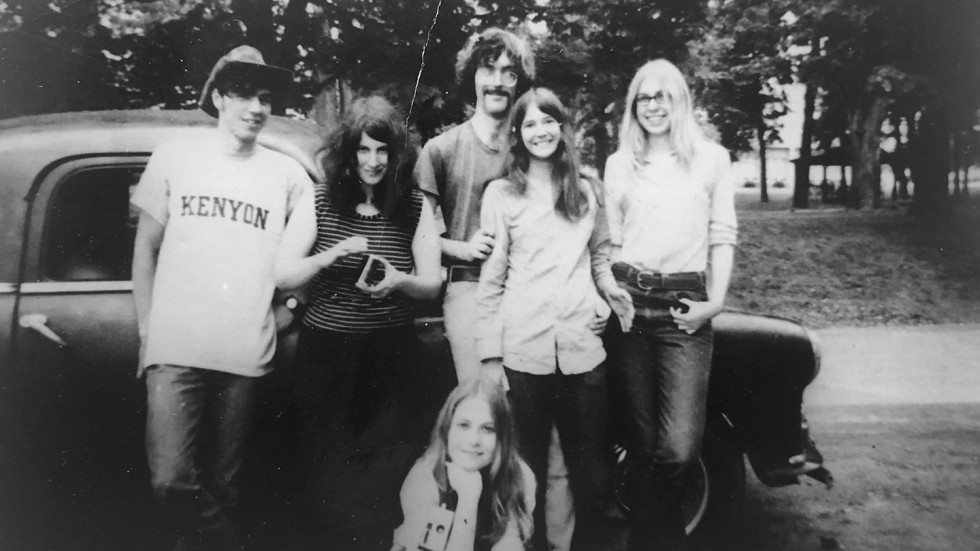Introducing President Kornfeld
20 things to know about Kenyon’s twentieth president that you won't find on her resume.
Read The StoryCelebrating Kenyon pride, one decade at a time.

1970
The first women students arrive at Kenyon.
Earth Day is celebrated in the U.S. for the first time in April, and Congress passes the National Environ-mental Policy Act. A new group at Kenyon, Ecology Group, plans its first Earth Day celebration.
On May 4, the Ohio National Guard kills four and injures nine unarmed college students during a peace rally on the Kent State University campus opposing the U.S. military’s expansion of the Vietnam War into Cambodia. Kenyon gains national attention as one of the few colleges to remain open and peacefully continue regular operations.
1972
The College transitions into a fully coeducational institution on July 1, 1972, and the short-lived Coordinate College for Women comes to an end.
1973
In October, actress and activist Jane Fonda gives a speech on campus for the Indochina Peace Campaign.
In May, the first female students graduate from Kenyon, and U.S. Representative Shirley Chisholm speaks at Commencement. During her speech, she notes, “Liberation in America must transcend ending discrimination against a particular race. It must entail ending discrimination because of sex, origin and religion as well.”
1974
Richard Nixon resigns the presidency in August.. A Sept. 12 Collegian op-ed notes, “He leaves without a doubt, the most deceitful and scandalous administration ever in the history of the United
1978
Paul Newman ’49 H’61 returns to Gambier to direct the new Bolton Theater’s inaugural production of “C.C. Pyle and the Bunion Derby,” whose cast features Allison Janney ’82.
K.D. Novak Burnett ’73 was a member of Kenyon’s first class of women. After college, she earned a master’s in social work from the University of Wisconsin and became a “social worker, singer-songwriter, Quaker activist, wife, mother and grandmother.” The Kenyon Alumni Magazine asked her to share her strongest memories from her time at Kenyon. Here’s what she wrote.
Although I have many joyous memories of my first year at Kenyon in 1970, (“Spring Riot”, which was a spontaneous descent into anarchy involving water balloons,
Julie Miller Vick’s red hair flaming in the sunlight as she showed us the flag she had just sewn for the first Earth Day), my strongest memory is of the tsunami of terror and tragedy that engulfed us that spring in a series of rapid-fire events: Nixon’s announcement of the bombing of Cambodia, which sparked an eruption of protests across the land (April 30) followed by the news that four students had been killed at Kent State (May 4) and the emotionally charged all-school meeting in Rosse Hall the next day. The frisbee held in mid-air, the chorus of voices about to laugh, the poem being scribbled in a notebook — all froze, as our heads turned toward the horror of an event that demanded that we act.
Did it matter what one 18-year-old chose to do in this moment? Like so many at Kenyon, I believed it did. We marched in Columbus under threat of violence just days later, and formed a Kenyon caravan bound for Washington, D.C., where we joined a crowd 100,000-strong on May 10 in a mass demonstration organized in the blink of an eye without cellphones, email or the Internet. Inspired students also canvassed Mount Vernon as part of “The Mobe.” Professors generously offered grace to those who felt called to make history, rather than to read it. A heroic Don Rogan gave oral exams on Middle Path, and many, like me, took incompletes and never went back to class. But before we could congratulate ourselves, news came on May 15 that two more students had been gunned down at Jackson State. No justice, no peace! Four dead in O-hi-o!
Related Article: The Flower of Her Youth, by K.D. Novak Burnett '73, published in the Spring 1995 edition of the Kenyon Alumni Magazine.
Pictured above: K.D. Novak Burnett (second from right) and friends returning from the March on Washington in May 1970.
20 things to know about Kenyon’s twentieth president that you won't find on her resume.
Read The Story“There’s very little artifice to the American story when you look at how we treat the dead,” according to…
Read The StoryHow Writer-in-Residence P.F. Kluge ’64 and his wife, Pamela Hollie, became surrogate parents to a generation…
Read The Story